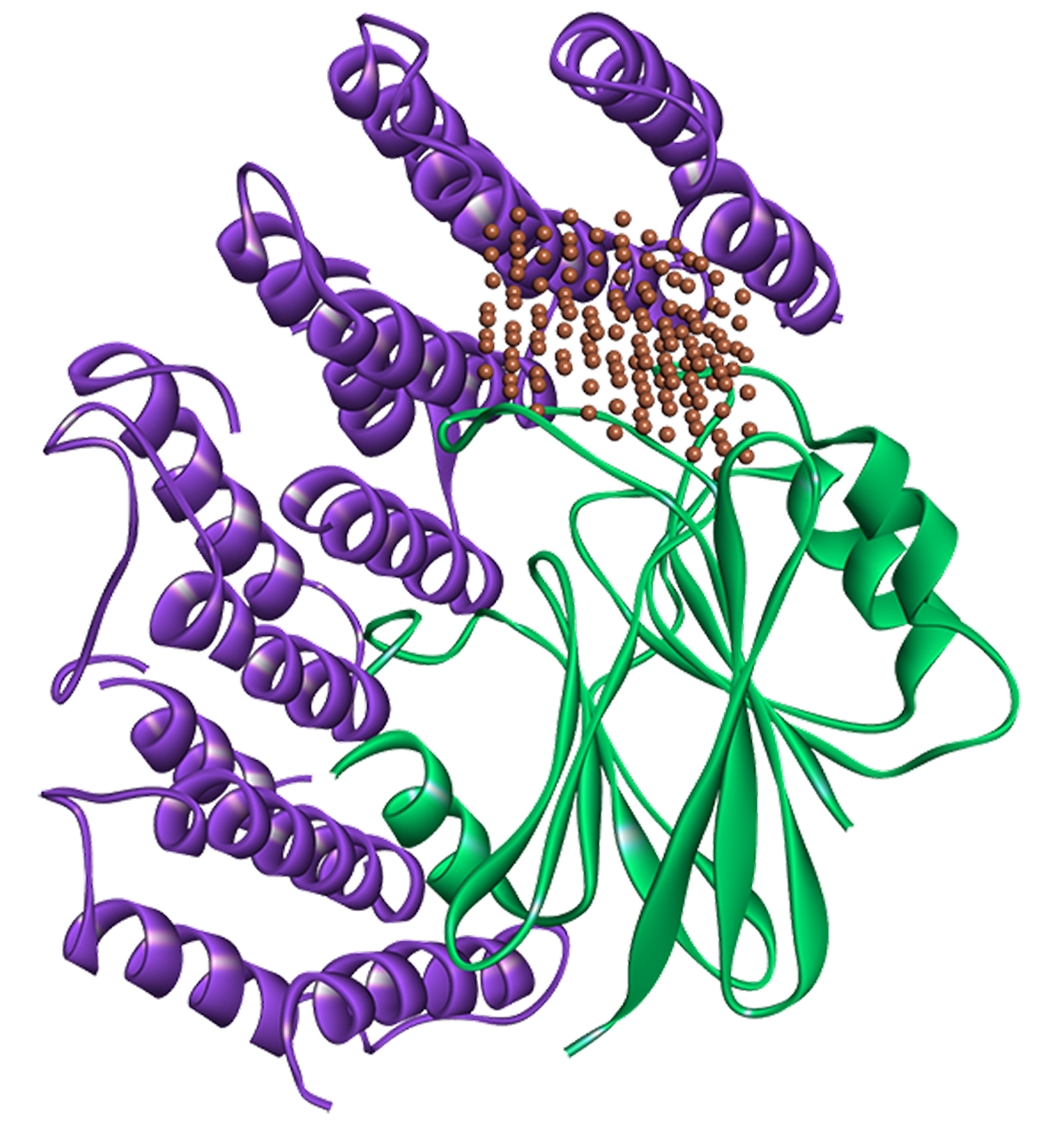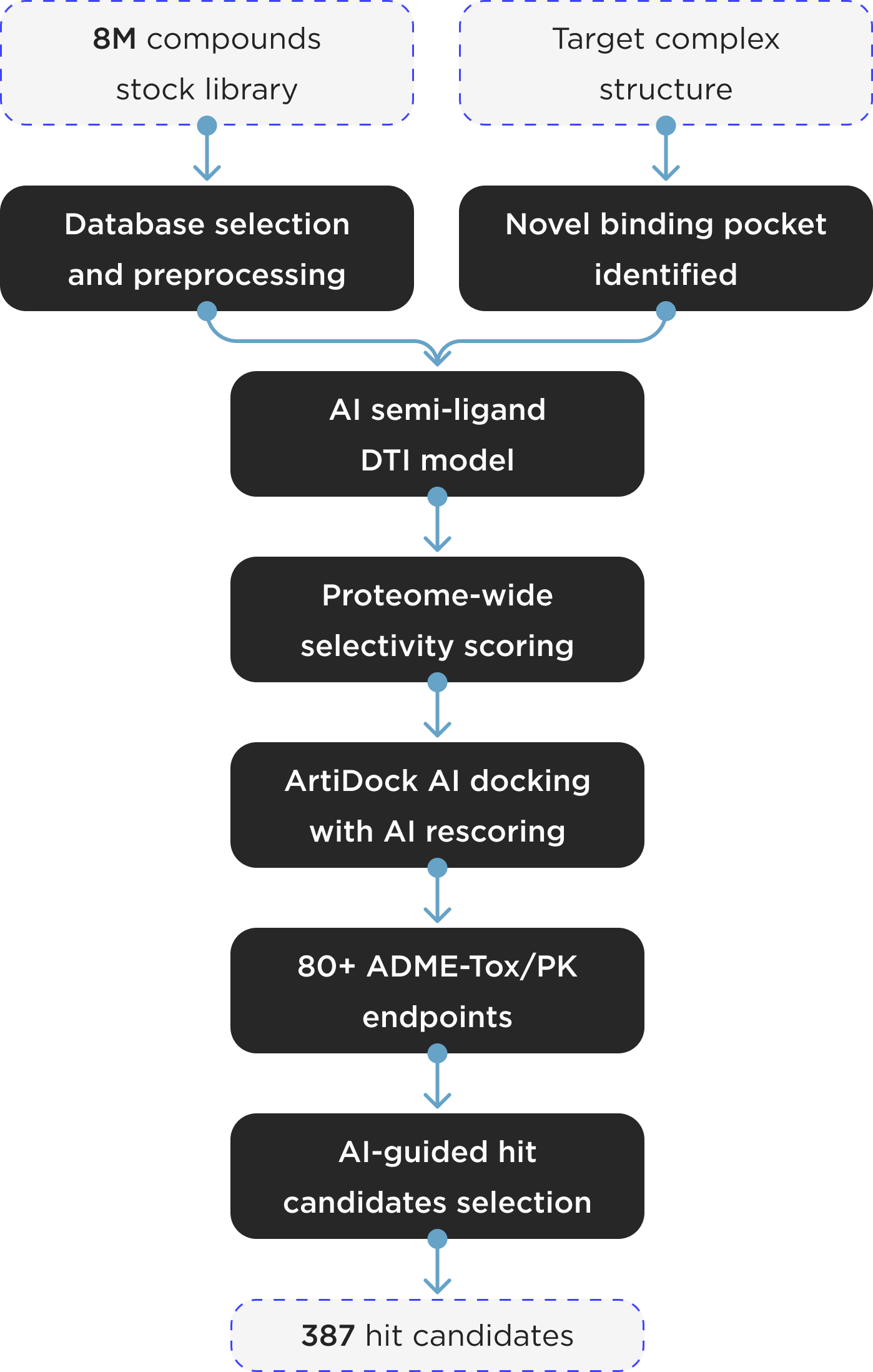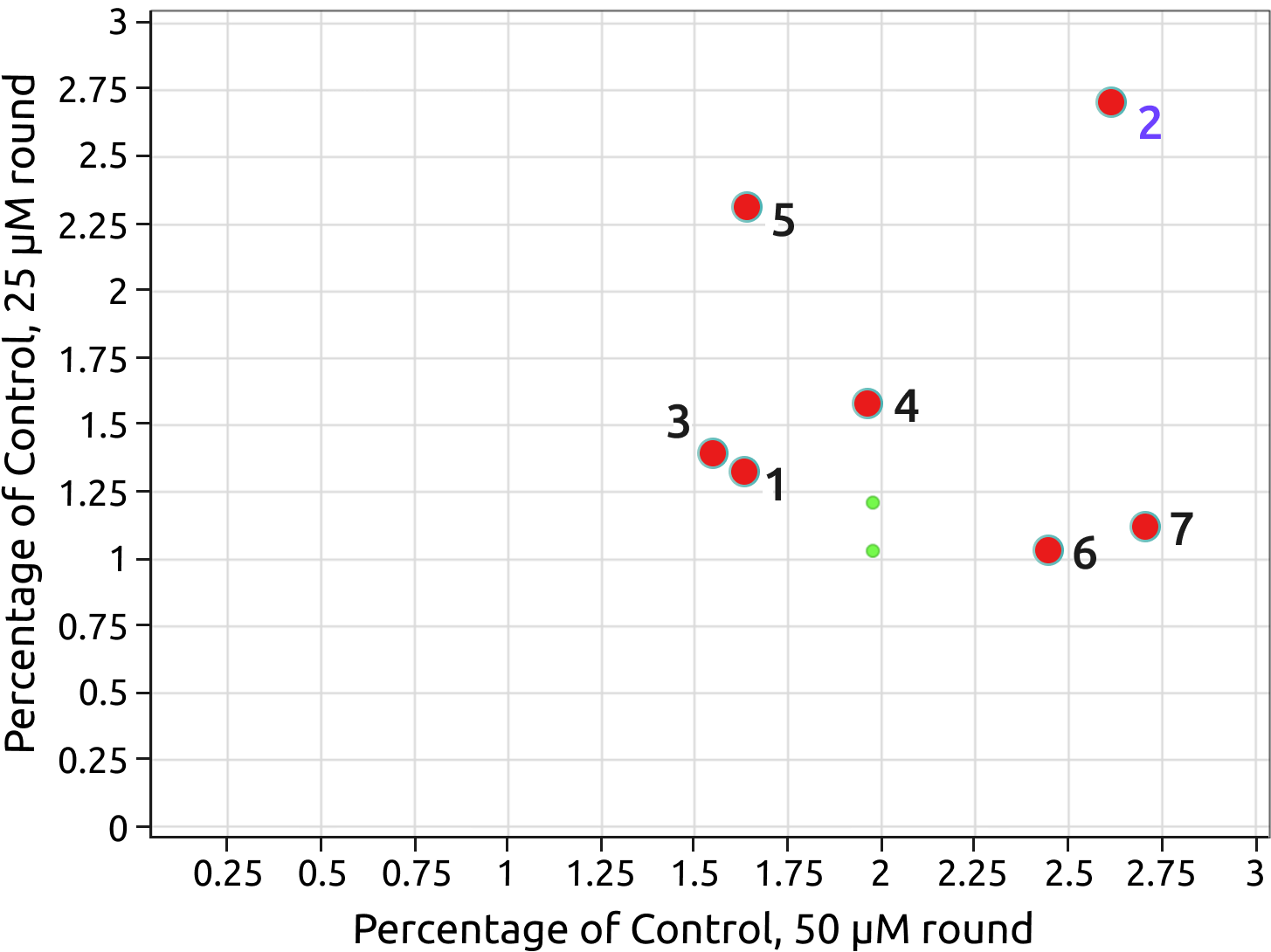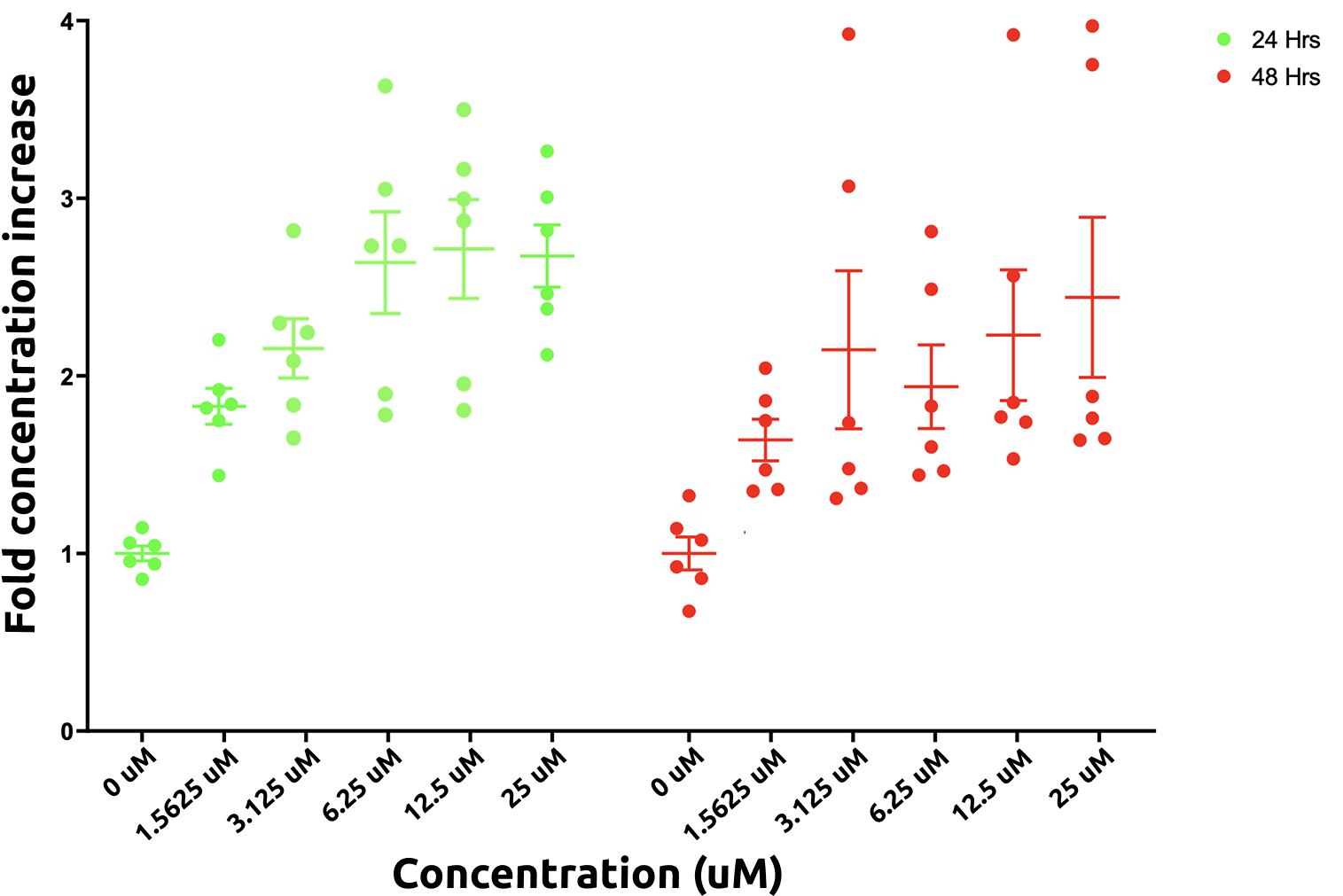Designing molecular glue to stabilize membrane complex
Utilizing Receptor.AI’s Induced Proximity platform to design small molecule stabilizer for the retromer complex

7
potent hits out of
387 candidates
250%
target complex concentration
increase
400%
higher potency compared to
best existing rivals

01/ Background
- The goal is to design “molecular glue” to stabilize the membrane complex associated with autophagy and neurodegeneration.
- The complex consists of 2 proteins with unknown binding sites.
- Only 2 low-quality ligands are known (mediocre binding affinity).
02/ Methodology
- Novel binding pocket at the protein-protein interface identified by Receptor.AI's proprietary pocket detection AI model.
- 8M stock library subjected to virtual screening.
- 1000 top-ranked candidate compounds were selected.
387 used for experimental validation. - Experimental validation was conducted on the HEK 293 cell line to assess modulation of target expression (Western blot).
- The activity of identified hit compounds, along with the absence of cytotoxicity, was substantiated through dose-response analysis.
03/ Results
- 7 hit compounds with over 150% increase in target concentration identified at the 50 μM compound concentration.
- 5 hits with over 125% increase at the 25 μM concentration.
- 4 active scaffolds were chosen for future series expansion.

*Assay results for the two rounds with different
compound concentration. Green is for rivals
compound concentration. Green is for rivals

04/ Best Compound
- The best hit (2) shows over 250% target concentration increase.
- 400% higher potency compared to the best existing rivals.
- Exhibits a nearly sub-micromolar EC50.

